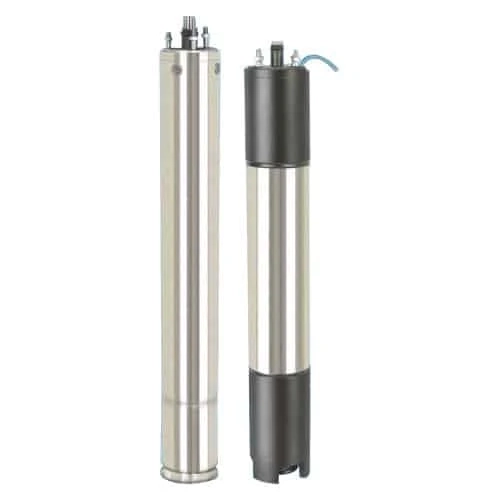Due to their versatility and dependability, submersible pumps are particularly well-liked, and for a good reason. They now have a sizable market share for both household and commercial use. They are very efficient, do not require priming, and are guarded against the cavitation issue. With our vast expertise in submersible pumps, we can provide excellent guidance on the factors to consider before purchasing a submersible pump.
Tips to consider before buying a submersible pump
Each type of submersible pump operates according to the same processes and principles. Regarding technical features and intended uses, each pump is unique. Additionally, they are available in various types, including deep well submersible, open well submersible, horizontal open well pumps, vertical multistage pumps, and many more.
You should examine different submersible brands, models, and other important aspects based on your intended use before making a purchase. We have put up a list of criteria that will aid you in choosing the best submersible pump.
Different submersible pumps for distinct water
The sort of water you intend to pump is the most crucial factor to consider before purchasing a submersible pump. The submersible pumps‘ specifications vary depending on the water type and location.
1. For clear water:
A narrow submersible pump with a maximum grain diameter of 5 mm will be the best option if you’re trying to gather clear water, such as rainwater, and pump it for storage. Additionally, you should confirm how much soil will be pushed in with the water.
2. For dirty water:
A submersible pump designed for filthy waters is required if the water you want to pump contains a lot of dirt. Even with mud and dirt particles, these pumps ought to work properly. Septic systems and sewage can both be cleaned with these pumps. Grain size is one of the most crucial things to consider before purchasing a submersible pump for unclean water. You are seeking a gain diameter between 10 and 20 mm.
3. For wells:
Water from household plumbing systems is frequently pumped using submersible pumps for wells. Submersible pumps are used to pump water from very deep wells because other types of pumps are ineffective for the task.
4. For garden ponds:
A submersible pump is required to operate a fountain or control a stream running in a garden pond. Pumps can be submerged right into the water. Both freshwater and saltwater pumps come in a variety of designs.
Float Switch and Flow Switch Controls in a submersible pumps
A float switch is another crucial aspect when buying a submersible pump. The pump is controlled by this switch in accordance with the water level. When you need to stop pumping because there is no water where you are pumping from, you can utilize this switch. When the water level lowers, a float switch will immediately shut off a submersible pump to prevent catastrophic damage from occurring.
A flow switch controls how much water will flow through the pump at any one time. They come in two types: tethered switches, which operate the pump, have a diameter of 14 inches and are commonly used in smaller submersible pumps. Vertical switches, which have a diameter of 10 inches, are also available.
Discharge Height and rate
A 3 hp Submersible pump is typically used to move water from low to high elevations. The discharge height is shown here. In order to determine if the water will reach the desired level, it is used to make predictions. If you want to pump water from the rain barrel to another container, your discharge height will be significantly lower. If you wanted to pump water from the basement to a point that was significantly higher, you would need a higher discharge height.
The discharge rate of the submersible determines how much water it can pump every hour or minute.
A power level of 250–500 watts per hour will be plenty if you just want to pump water out of the barrel. If you want to pump water out of a basement level, you’ll need a submersible with a high power level or a discharge rate of 1 to 2 gallons per hour.
Outlet Size of the submersible pump
The exit pipe through which the water is forced must be linked to the 10 hp submersible pump. They are offered in a range of sizes and have a variety of uses. The pipe that connects the output and the storage tanks must be the same size.
Bore-well size of the submersible
The borewell, also referred to as the submersible hole, has the following dimensions. You can start digging the borehole once you have determined the diameter of the pump. The borewell gets bigger as the pump gets bigger. The opposite is not true; a small submersible can fit into a bigger borewell.
Conclusion
We make decisions even when we aren’t paying close attention to what we are considering purchasing. New issues surrounding the human mind and decision-making processes are discussed and debated daily, and new hypotheses are put out and put to the test. Considering purchasing a submersible pump? Visit IndustryBuying and get your best deals on submersible pumps.
0



